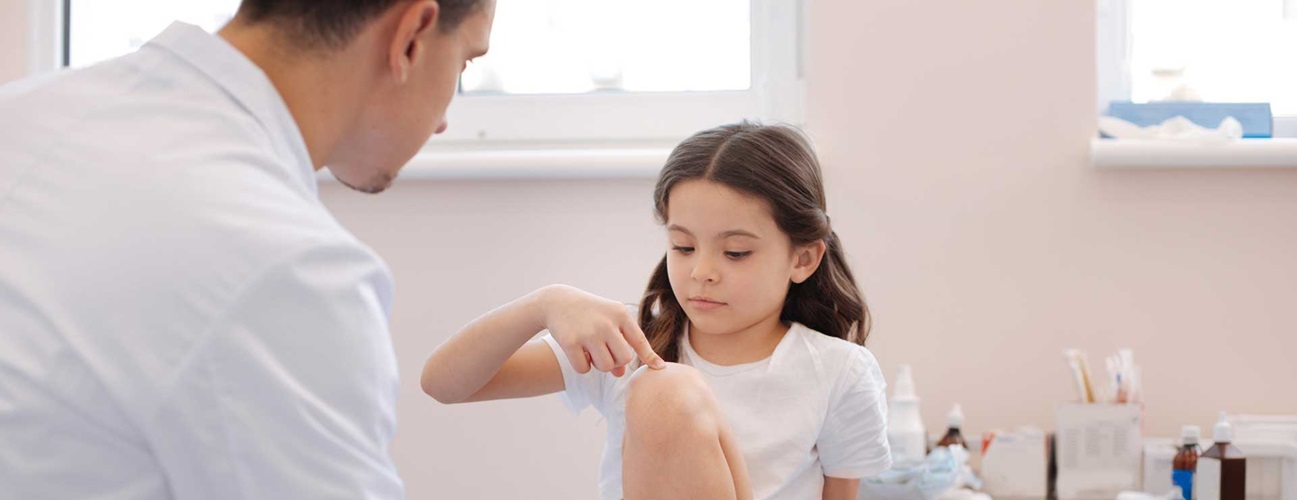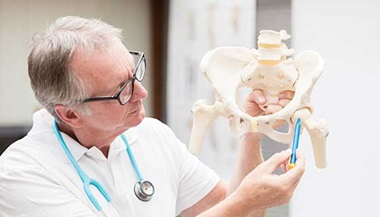Blount's Disease
What You Need to Know
- Blount’s disease is a disorder of the growth plates in the bones around the knee. It causes a child to have a bowlegged appearance.
- There are two types of Blount’s disease based on the child’s age: infantile and adolescent.
- Besides the bowed legs, some children — generally adolescents — may also experience pain and instability in the knee.
- The child’s age and degree of deformity are some of the determining factors for choosing the treatment.
What is Blount’s disease?
Blount’s disease is a condition found in children that affects the growth plates around the knee. The disease causes the growth plate near the inside of the knee to either slow down or stop making new bone. Meanwhile, the growth plate near the outside of the knee continues to grow normally. The result is a bowlegged appearance in one or both legs.
Types of Blount’s Disease
Infantile Blount’s Disease
Bowed legs are relatively normal in children under age 2 and generally improve by 18 to 24 months. Infantile Blount’s disease generally appears around the same age, but the bowing does not improve and instead worsens over time.
- Occurs between the ages of newborn to 3.
- Usually occurs in both legs (bilateral).
- Deformity is in the tibia (shin bone) only.
- More common than the adolescent type.
Adolescent Blount’s Disease
- Occurs in children over 10 years of age.
- More likely to affect one side only (unilateral).
- Deformity typically occurs in both the thigh bone (femur) and the tibia.
What are the symptoms of Blount’s disease?
Children with Blount’s disease will have bowing of one or both of their legs, a condition called genu varum. Some, especially adolescents, may also complain of knee pain or instability.
What are the risk factors for Blount’s disease?
The exact cause of Blount’s disease is unknown. Children with infantile Blount’s disease are typically early walkers (prior to 12 months) and are often overweight. Adolescent Blount’s disease may be related to rapid weight gain or obesity. There is also believed to be a genetic component. Blount’s disease tends to run in families.
Blount’s Disease Diagnosis
Blount’s disease is diagnosed by physical exam and X-ray. If Blount’s disease is suspected, your pediatric orthopaedic specialist will order an X-ray. X-rays may demonstrate the deformity in the bone and may also show abnormalities at the growth plate.
Blount’s Disease Treatment
The goal of treatment for Blount’s disease is to correct the deformity and improve overall alignment of the legs.
Nonsurgical Treatment
For young patients with infantile Blount’s disease, bracing can be effective. The goal of bracing is to guide the legs into a straighter position as the child grows. An improvement is usually noticed within 12 months of treatment. If the deformity is not corrected by the age of 4, surgery may be needed.
Surgery for Blount’s Disease
Surgery may be recommended if bracing doesn’t produce desired results. Children with severe deformities and those who are no longer candidates for bracing may also need surgery. Several surgeries are available to treat Blount’s disease, including osteotomies and hemiepiphysiodeses.
An osteotomy is a procedure that involves cutting and realigning the bone to put it in a more normal position. This type of surgery usually corrects the deformity immediately.
A hemiepiphysiodesis, on the other hand, corrects the deformity over time. It involves placing plates or staples on one side of the growth plate to stop the growth on that side. The plate guides the growth of the bone into a straighter position while the nonplated side continues to grow.
What is the outlook for patients with Blount’s disease?
Once the deformity is corrected, most children are able to resume their normal activities without limitations. However, an orthopaedic specialist should examine your child throughout his or her growth. It’s important to monitor for worsening deformities or differences in leg lengths that may result from this disease.
All children, and especially those with Blount’s disease, benefit from maintaining a healthy weight. It helps limit the damage to joints over time.






